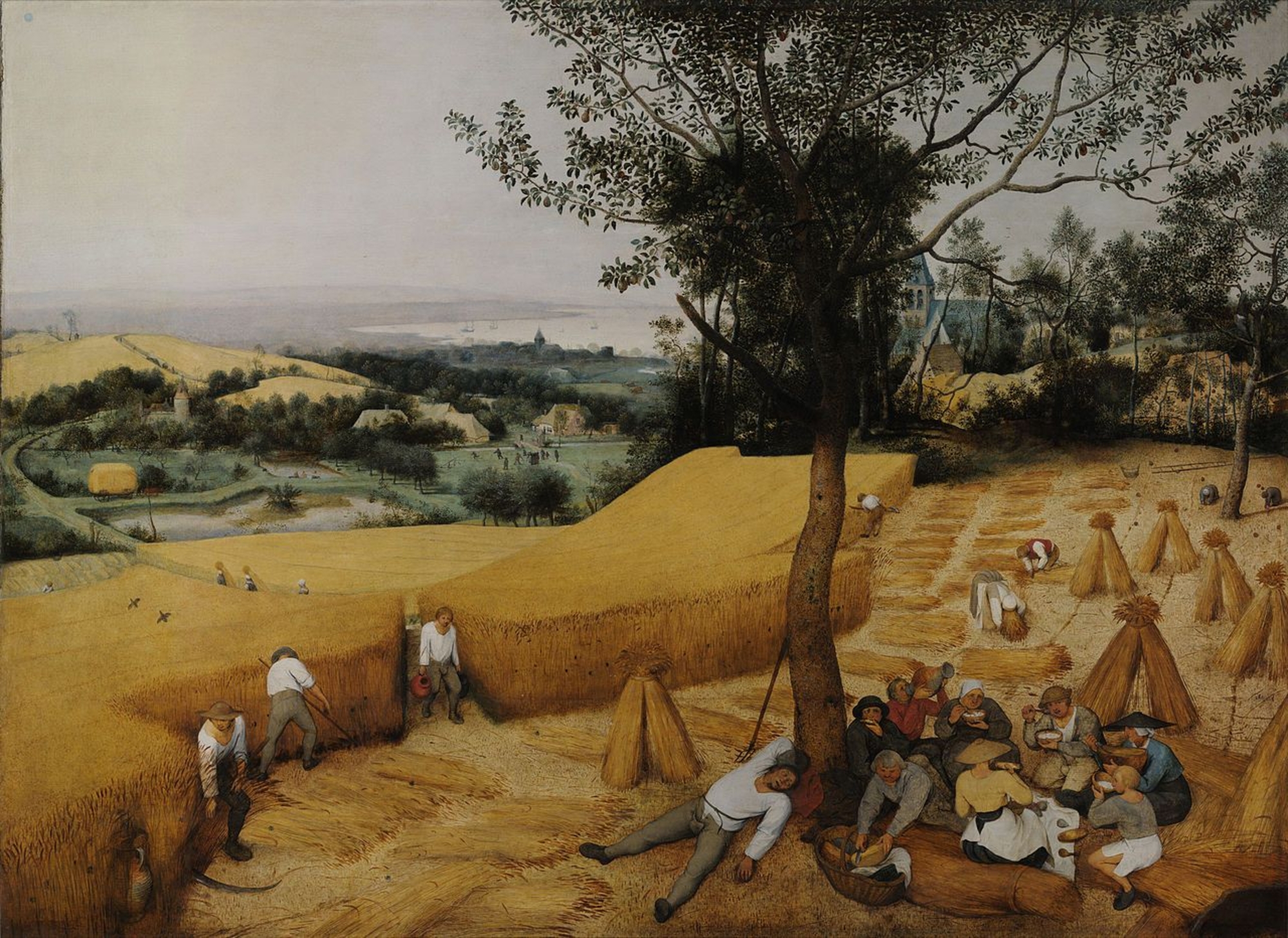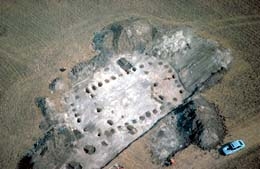- Home
- Discoveries
- The Gallic farm at Verberie (Oise)
Hypothetical reconstruction of the large Gallic house at Verberie (Oise) and its surroundings on the banks of the Oise. It has a sub-rectangular layout, with slightly rounded corners. It measured 22 meters long by 12.5 meters wide
A site occupied in the past
In the twelfth century BCE, the last great hunters of the Prehistoric era — and more precisely the Magdalenian civilization, — set up their encampments on the banks of the Oise River on several occasions. They came to hunt reindeer during their fall migration. Their principal activities included working bone, butchering, and preparing reindeer hides (excavations of F. Audouze).
Other archaeological vestiges dating to the Néolithic and the Metal Ages (Chalcolithic and Late Bronze Age) were found in the same field. This concentration of remains is explained by the presence of a ford that was in use up until the nineteenth century.
An exceptional Gallic establishment
The Gallic site was discovered during a flyover organized during a dry spell in June 1976. Although the ripening of the wheat was well underway everywhere in the field, the stalks remained green over the location of postholes and pits, as well as in the lower part of the land near the river.
Aerial view of the Gallic house at Verberie (Oise).
View of the excavation of the same site. In one corner, we can see an internal divider that separated the living quarters, the rest being probably used as a hay barn and stable.
The excavation, carried out in August of the same year, brought to light a large rectangular building with slightly rounded corners, measuring 22 meters long by 12.5 meters wide (Blanchet et alii 1983).
The structure consisted of 39 external holes for the posts that supported the external walls of wood and cob. The roof structure was held in place with six internal beams (every third post) that formed an internal frame. The posts were firmly fixed in the earth, forming a structure that was particularly well adapted to cover a large central space measuring 140 sq. meters — as large as it was long — out of a total surface area of 225 sq. meters.
The five adjacent pits that border or intersect with the postholes yielded mainly pottery that was typical for the early second century BCE. This building must have had multiple functions: habitation, barn, stable, workshop, or perhaps a community area.



